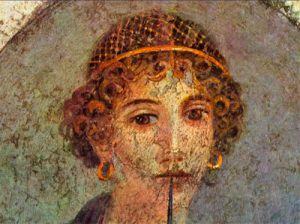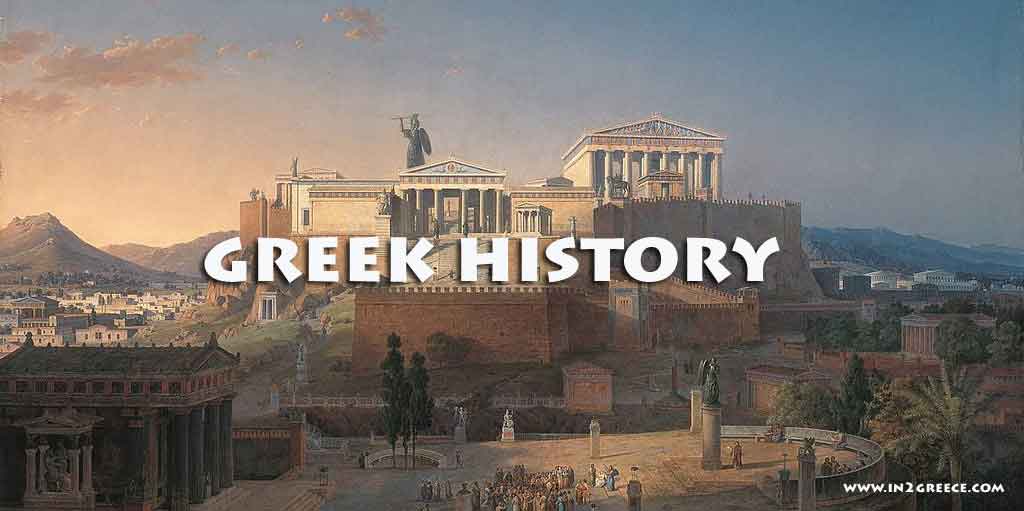Greco-Roman period

During the Roman period, Greece played an important role in the Roman Empire as a center of culture, science, and philosophy. The Romans were heavily influenced by Greek literature, art, and philosophy, and many famous Roman poets and scholars, such as Virgil and Cicero, studied in Greece.
Under Roman rule, Greece was divided into several provinces, including Achaea, Epirus, and Macedonia. The Romans brought many improvements to Greece, including roads, aqueducts, and public buildings. They also developed the port city of Corinth into an important center of trade, moving goods between Asia and Europe.
Despite this prosperity, the Roman period in Greece was not without its challenges. There were several uprisings and rebellions against Roman rule, and the Greeks faced invasions by neighboring peoples such as the Goths and Huns. Nevertheless, Greece remained an important part of the Roman Empire for centuries.
One of the most famous events of the Roman period in Greece was the burning of the ancient Library of Alexandria in Egypt, which occurred during the reign of the Roman emperor Aurelian in AD 270. Although this event did not happen in Greece itself, it nonetheless had a significant impact on the intellectual and cultural life of the Roman Empire, including in Greece.
Society during the Greco Roman Period
When one by one the kingdoms of the Successors were incorporated into the Roman territory, nothing more was done than the further growth of the already enormous area of the unified anthropo-geographic space. The social phenomena that interest us also escalated accordingly.
With the eventual triumph of the Romans and the shrinking or abolition of whatever democratic institutions were still functioning, the poorer sections of the conquered Greek populations were hit hard. The mechanisms that had been built over the course of centuries to protect their interests were no longer working. The upper and wealthier classes instead consolidated their social and economic privileges.
Roman spectacles
The movement of populations was free throughout the empire; transactions were facilitated by the single currency, and all kinds of enterprises, commercial, banking, industrial, etc., could yield unimaginable riches. Countless riches had accumulated both in the imperial house and in the hands of the Roman officials who took advantage of the heavy taxation, extraordinary levies, fines, etc.
Social life centered on grand public celebrations.
They were organized with special care, on a large scale and without counting expenses, by the emperors, local governors and other officials, wanting to win and maintain the favour of the popular crowd, who at that time were said to be asking for nothing but “bread and spectacles”.
Religious festivals kept their place, as always, but the main place of events had moved from the sacred precincts to the stadiums, where not only athletic competitions and horse races were held, but also gladiatorial contests, animal fights and the like.
These Roman spectacles, which excited the spectators so much that “they forgot everything and were not ashamed to do whatever came to them” (Dion Chrysostomos 32.41), were also adopted by the Greeks, who often, in order to be able to present them, transformed their traditional theatre buildings.
Religious fusion or syncretism belongs to the phenomena that had begun in the Hellenistic era and continued more intensely in the Greco-Roman era.
In religious syncretism, the various religions of the peoples of the empire mixed and influenced each other, both at the ideological-doctrinal and the practical-worship level. The first example is the Romans themselves, who had incorporated many foreign elements into their religion, not only Greek but also Oriental.
In religious matters, the Romans were, as we might expect, secular: they not only tolerated but also supported the various national religions with their various cults and, if certain vassal states decided to dedicate temples to Jupiter Capitoline or even to the goddess Rome, this did not happen because the conquerors demanded it, but because the local lords wished in this way to win the favor of the Roman power.
A special chapter was the worship of the emperors, who following Hellenistic standards were deified before their death, one after another.
Mystery cults
In the Greco-Roman era, the mystery cults had a significant spread. This included both the Greek ones, such as that of Demeter in Eleusinia, where many emperors sought to be initiated and were accepted, and those of other peoples, such as the mysteries of the Iranian god Mithras and the Egyptian Isis, who was identified sometimes with Demeter sometimes with the goddess Tychi. At the same time, all sorts of soothsayers, astrologers and miracle workers abounded who in one way or another exploited the superstition of both the masses and the upper social classes.
As a reaction to the religious disorder and the general ideological confusion of a society where life is difficult and full of fraud, wickedness and sorrow, religious movements with monotheistic concepts and a strong spiritual-philosophical content, such as Orphism quickly developed. This development marked the transition to the next, Byzantine era, and took the form of Hermeticism and Christianity. This teaching spread rapidly and was officially recognized where it occurred.
The radiation and dissemination of Greek letters and Greek art continued in the Greco-Roman years, more intensely, as now not only the conquered peoples but also the Romans themselves participated in linguistic and cultural Hellenism. After all, we will see that in the Greek literature of the time, several Hellenizing foreigners, such as Lucian, Philo the Judean, the emperor Marcus Aurelius and others, who, setting aside their language, preferred to write in Greek.
Literature and Arts of the Greco-Roman Era
Three related currents or movements developed and marked the intellectual life of the Greco-Roman era: the more general current of classicism, the more specific linguistic movement of Atticism, and the so-called second sophistry, which transformed the meaning and function of the art of rhetoric. Classicism is defined as the attempt by younger writers and artists to follow, faithfully, classical standards. Sporadic phenomena of classicism can already be found in the Hellenistic era, but the classicist trend reached its peak in the Greco-Roman years when writers and artists turned nostalgically to classicism.
In the context of more general classicism, Atticism is defined as the tendency of certain prose writers of the Greco-Roman era not to use in their works the common Greek language of their time but the Attic dialect of the Classical era, as they knew it from the works of Lysias, Xenophon, of Plato and others.
The second sophistic school is made up of a group of rhetoricians who lived in the Greco-Roman era, travelling from one end of the empire to the other, giving lectures and lessons, usually with great success. Their speeches, which they ensured were published and circulated, dealt with a variety of (non-political!) subjects, and all belonged to the advisory and demonstrative rhetorical genre.
As a peculiar phenomenon of classicism in the visual arts, the massive production of copies of the sculptures of the Classical era can be interpreted in the Greco-Roman years.
A multitude of artistic workshops, in Athens, Pergamum and other cities of Asia Minor, did nothing more than produce copies of classical works, which were immediately sold to decorate states, palaces and mansions throughout the Roman territory.
The Romans highly valued Greek art and whose influence was and remained decisive. However, Roman art cannot be interpreted as a simple classicist imitation of Greek models, as it varied in many ways. It acquired its own Roman character, and in turn, influenced the artistic creations of the Greco-Roman era.
Within this art form, ambition and wealth are not hidden. Their expression was shown through the huge palace complexes, unimaginably luxurious, and the imperial or private mansions with heavy decorations which were scattered throughout the territory. Similarly, the greatness and fame of the emperors, officials and other powerful persons were expressed by their thousands of glorified depictions in busts and statuettes, in sarcophagi, or even in reliefs that told of, for example, a victorious campaign, from its beginning to its triumphant end.
The practical spirit of the Romans and the care of the central authority for the citizens were expressed in a whole series of public works and institutions, marvelous in their durability and functionality. These included not only roads, bridges, markets, fountains, baths, and aqueducts, but also healing centres like the Asclepius of Pergamum, libraries like the beautiful one of Ephesus (110 AD), and venues for musical events (ᾠδεῖα), (amphitheatres) to mention just a few.
Athens was particularly favoured by the Roman construction projects in the Greek region, as important Roman emperors admired and honoured it for its spiritual status. Already Julius Caesar and Octavian Augustus financed the Roman market (10 BC); later the emperor Hadrian (117-138 AD) built the Hadrian library and completed the temple of Olympian Zeus; finally, the emperor Antoninus Eusevis (138-161 AD) completed the Athenian aqueduct, which started from Parnitha and reached the Reservoir at the foot of Lycabettus – the same Reservoir which, repaired, is still used today, the Theophany, for sanctifying the waters.
